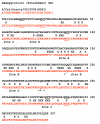Towards a sane and rational approach to management of Influenza H1N1 2009
- PMID: 19422701
- PMCID: PMC2691743
- DOI: 10.1186/1743-422X-6-51
Towards a sane and rational approach to management of Influenza H1N1 2009
Abstract
Beginning in March 2009, an outbreak of influenza in North America was found to be caused by a new strain of influenza virus, designated Influenza H1N1 2009, which is a reassortant of swine, avian and human influenza viruses. Over a thousand total cases were identified with the first month, chiefly in the United States and Mexico, but also involving several European countries. Actions concerning Influenza H1N1 2009 need to be based on fact and science, following recommendations of public health officials, and not fueled by political, legal or other interests. Every influenza outbreak or pandemic is unique, so the facts of each one must be studied before an appropriate response can be developed. While reports are preliminary, through the first 4 weeks of the outbreak it does not appear to be severe either in terms of the attack rate in communities or in the virulence of the virus itself. However, there are significant changes in both the hemagglutinin and neuraminidase proteins of the new virus, 27.2% and 18.2% of the amino acid sequence, from prior H1N1 isolates in 2008 and the current vaccine. Such a degree of change qualifies as an "antigenic shift", even while the virus remains in the H1N1 family of influenza viruses, and may give influenza H1N1 2009 significant pandemic potential. Perhaps balancing this shift, the novel virus retains more of the core influenza proteins from animal strains than successful human influenza viruses, and may be inhibited from its maximum potential until further reassortment or mutation better adapts it to multiplication in humans. While contact and respiratory precautions such as frequent handwashing will slow the virus through the human population, it is likely that development of a new influenza vaccine tailored to this novel Influenza H1N1 2009 strain will be essential to blunt its ultimate pandemic impact.
Figures

References
-
- Outbreak of Swine-Origin Influenza A (H1N1) Virus Infection – Mexico, March – April 2009. MMWR Morb Mortal Wkly Rep. 2009;58:467–470. - PubMed
-
- Swine Influenza A (H1N1) Infection in Two Children – Southern California, March – April 2009. MMWR Morb Mortal Wkly Rep. 2009;58:400. - PubMed
-
- CDC. H1N1 Flu (Swine Flu) http://www.cdc.gov/swineflu
-
- WHO. Influenza A(H1N1) http://www.who.int/csr/disease/swineflu/en/index.html
Publication types
MeSH terms
Substances
LinkOut - more resources
Full Text Sources
Other Literature Sources
Medical

